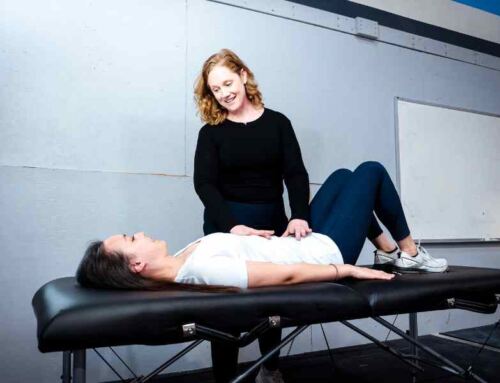Exercises for Pudendal Neuralgia Relief
Pudendal neuralgia is irritation to a nerve in your pelvis that is often described as sharp, shooting, or burning pain in your pelvic floor region. Nerves can become irritated through direct injuries, compression, or being over-stretched. The pain is often felt from the pubic bone to the tailbone and may be stronger on one side than the other.
Pudendal neuralgia can be triggered by a long, difficult labor, fall onto a hard surface, straining with constipation, or repetitive insults to the nerve over time.
Fortunately, with proper management, lifestyle adjustments, and targeted exercises, relief is possible. This blog explores the causes, symptoms, and effective exercises to alleviate pain and promote healing. I’ll also highlight the importance and benefits of consulting a pelvic floor physical therapist to address the underlying issues contributing to pudendal neuralgia.
Recognizing the Symptoms of Pudendal Neuralgia
The symptoms of pudendal neuralgia can vary but are typically centered around the pelvic floor region. These symptoms often present as a combination of pain, discomfort, and heightened sensitivity, which can make everyday activities challenging.
Understanding the common signs can help in identifying the condition early and seeking appropriate treatment. Below are the key symptoms to watch for if you suspect pudendal neuralgia:
- Shooting, stabbing, burning pain in the pelvic floor region
- Aggravated by sitting
- Relief with standing, lying down, or sitting on a toilet
- Typically on one side of the pelvis
- Increased sensitivity with tighter clothing
- General pelvic pain
- Numbness or pins and needles
- Bladder/bowel irritation
- Dyspareunia
What Causes Pudendal Neuralgia?
Pudendal neuralgia often develops from activities or incidents that place strain, pressure, or trauma on the pudendal nerve. These causes can range from single traumatic events to repetitive stress over time, resulting in irritation or compression of the nerve.
While the specific cause may vary from person to person, understanding the common factors that contribute to this condition is essential for effective prevention and management. Below are some of the leading causes of pudendal neuralgia:
- Trauma during childbirth
- Activities placing extended strain on the lower pelvic area (i.e. horseback riding, squatting, cycling, constipation)
- Prolonged sitting
- Direct trauma to the back or buttocks
- Pelvic surgeries
- Musculoskeletal issues
- Poor posture
- Nearby muscle or tissue compression
Exercises to Relieve Pudendal Neuralgia
Incorporating gentle, targeted exercises into your routine can help alleviate the symptoms of pudendal neuralgia by reducing tension, improving mobility, and calming irritated nerves. These exercises focus on releasing pressure in the pelvic region, promoting relaxation, and enhancing overall pelvic floor health.
Let’s take a look at some of my favorites.
1. Sciatic Nerve Glide
Setup: Begin lying on your back with one knee bent and the other leg flat on the floor. Grasp the bent leg behind your thigh and straighten that knee.
Movement: Bend your foot down toward your body, then away toward the ceiling, keeping your leg straight. Repeat this movement.
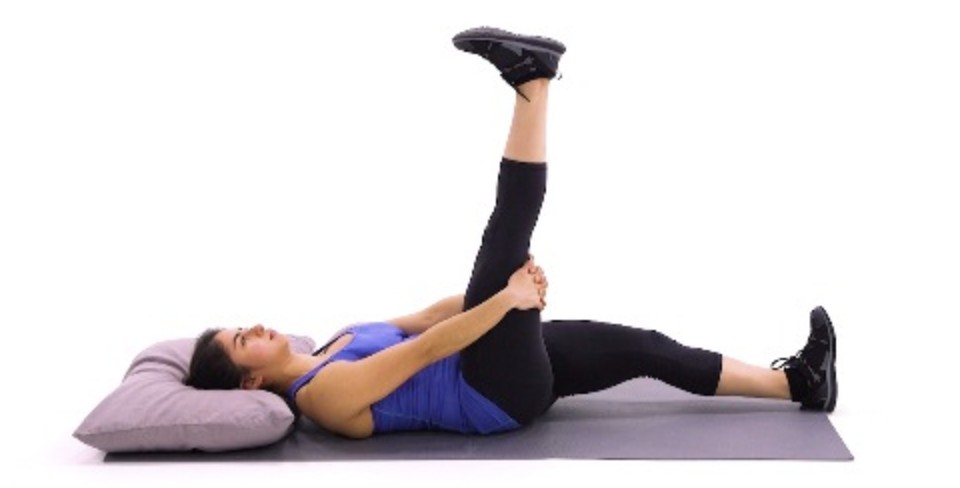
2. Deep Breathing in Happy Baby
Setup: Begin lying on your back with your legs bent and feet resting on the floor.
Movement: Lift your legs off the floor with your knees bent. Grab the inner arch of each foot and let your legs fall outward, opening up your pelvis. Once you are in this position, gently inhale and exhale while relaxing your pelvic floor muscles.

3. Inner Thigh Rock Backs
Setup: Begin on all fours.
Movement: Reach one leg straight out your side. Rock your hips front to back 10 times.
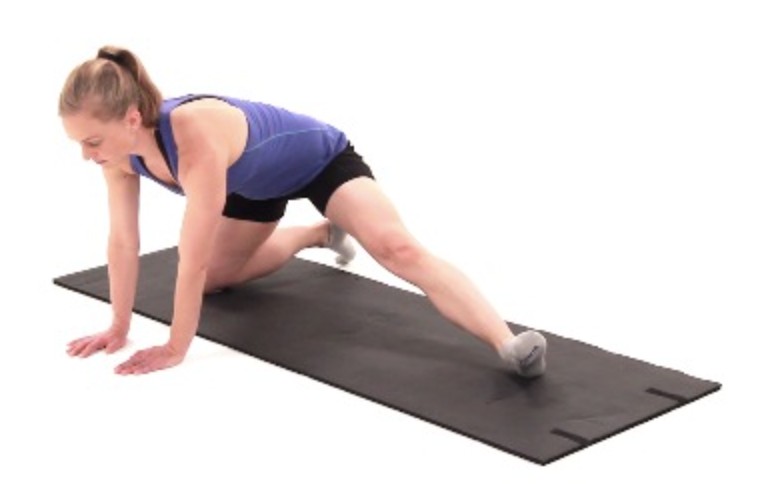
4. Cat/Cows
Setup: Begin on all fours with your arms directly under your shoulders.
Movement: Slowly sag your belly down towards the floor, then round your back up toward the ceiling and repeat.
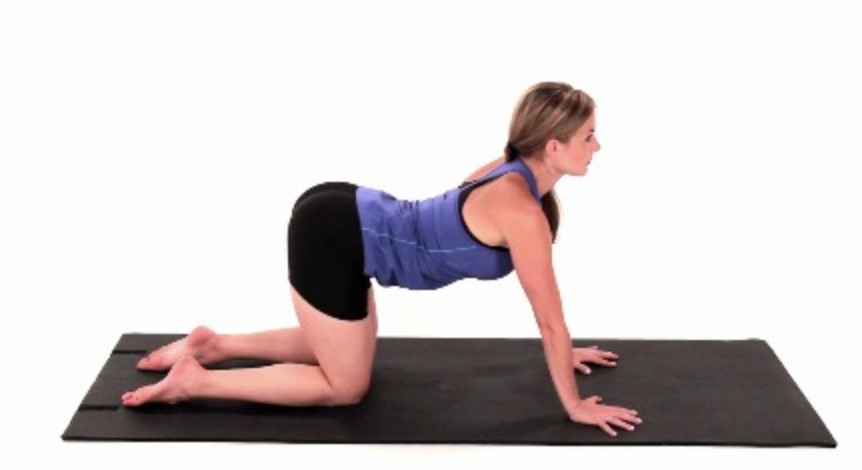
5. Pigeon Pose
Setup: Begin on all fours.
Movement: Bring one knee up towards your arms and rest the outside of that leg on the ground, with your other leg straight behind you. Bring your trunk forward, with your arms straight on the ground, until you feel a stretch.
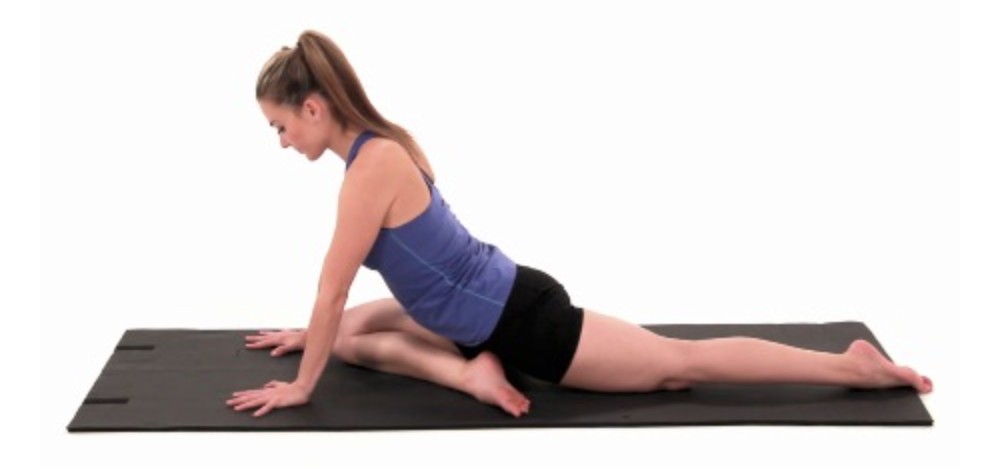
Practical Strategies for Managing Pudendal Neuralgia
Effective management of pudendal neuralgia requires a combination of lifestyle adjustments, targeted strategies, and professional support to reduce nerve irritation and promote healing. While recovery takes time, implementing these approaches can help alleviate symptoms and prevent further discomfort. Below are key areas to focus on for managing pudendal neuralgia:
Avoid or Modify Certain Activities
Yes, it can be extremely frustrating to take a step back from doing things you love, but know this is only temporary until we can get that nerve to calm down! We need to reduce irritation to the nerve because when nerves get angry, they like to stay angry unless we change some of the things we are doing to irritate it.
Manage Your Sitting
Relieving pressure on your pelvic floor can ease pain with the pudendal nerve. To do this, you can add a cushion to your chair to reduce excessive pressure from hard chairs. When possible, try to reduce the time you are sitting throughout the day. Even standing up once every 30 minutes can make a difference!
Bowel and Bladder Care
Avoid straining when emptying your bowels or bladder because this can strain the pelvic floor, which impacts the pudendal nerve.
Work with a Pelvic Floor Physical Therapist
These professionals have received extensive training to understand all factors that may be contributing to your pain. How do you know if you have found a high-quality pelvic floor physical therapist? Not only will they assess the region around your pain, but they will also assess your posture, breathing mechanics, spinal mobility, ergonomics, gait, and more. It is so important to look at the whole person because we are all unique, and there is no one-size-fits-all treatment.
Contact a MovementX pelvic floor physical therapist today for an in-person or online evaluation so we can help you get the care you need! Or visit www.pelvicrehab.com to find a PT in your area.
References
- Labat JJ, Riant T, Robert R, Amarenco G, Lefaucheur JP, Rigaud J. Diagnostic criteria for pudendal neuralgia by pudendal nerve entrapment (Nantes criteria). Neurourol Urodyn. 2008;27(4):306-10. doi: 10.1002/nau.20505. PMID: 17828787.
- Filler AG. Diagnosis and treatment of pudendal nerve entrapment syndrome subtypes: imaging, injections, and minimal access surgery. Neurosurg Focus. 2009 Feb;26(2):E9. doi: 10.3171/FOC.2009.26.2.E9. PMID: 19323602.
- Rosenbaum TY, Owens A. Continuing medical education: the role of pelvic floor physical therapy in the treatment of pelvic and genital pain-related sexual dysfunction (CME). The Journal of Sexual Medicine. 2008 Mar 1;5(3):513-23.
- A musculoskeletal approach for patients with pudendal neuralgia: a cohort study by Dornan, Peter R.1; Coppieters, Michel W.2
- https://www.medbridge.com/patient_care/programs/create




